|
Electronic portable measurement in the new media consumption context
Electronic portable measurement was launched in the United States by Arbitron to measure Radio at the end of the 90s. At the same period, Telecontrol launched the MediaWatch in Switzerland. Even if these technologies appeared as major innovations to measure media consumption, they have not become the standard solution to measure radio audience across the world.
Following announcements based on radio electronic measurement in the last months, CESP takes the opportunity of this newsletter dedicated to the media measurement community to highlight the opportunities of its expansion in the context of the current media consumption evolutions and to point out the barriers to its deployment.
CESP is also very pleased to give the opportunity to the main media measurement operators to share their strategic visions on the future of electronic portable measurement. GfK, Ipsos, Mediametrie and Nielsen accepted to share their visions on this topic.
Then, we are very happy to share the conclusions of some CESP missions conducted in the last months.
Enjoy your reading and please share your feedback.
Valérie Morrisson & Olivier Daufresne
|
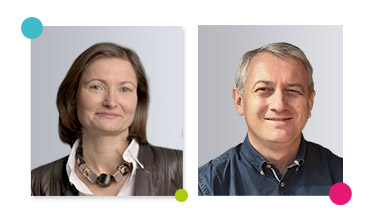 |
| |
CONTENTS |
 |
| |
What is the current scope of electronic measurement in the world? |
 |
| |
Electronic portable measurement covers the different approaches to collect media consumption through a personal device that panellists carry to collect their contacts with media automatically.
The two first major devices developed for this purpose were the pager of Arbitron and the MediaWatch of Telecontrol. The major radio industries that deployed this attractive approach were in North America, using the pager device developed by Arbitron. It was deployed in the United States and in Canada with a single approach to measure radio and TV consumption. A commercial cooperation between Arbitron and Kantar Media resulted in a limited expansion mainly for radio measurement in the rest of the world.
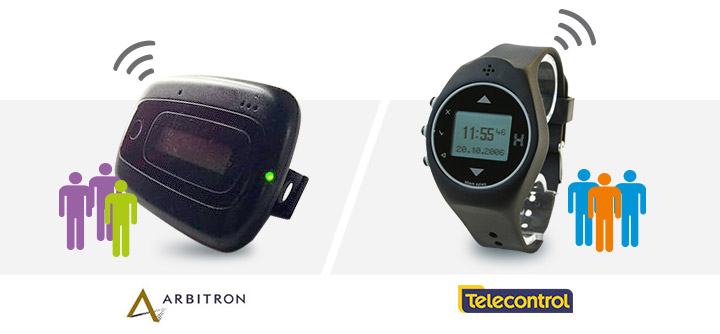
As far as Europe is concerned, in Switzerland, Belgium (TV and Radio/Flemish part), Denmark, Iceland (TV and Radio), Norway, Sweden and Italy operational electronic portable measurements were also set up. To complete this list, for Asia, personal peoplemeters have only been deployed in Kazakhstan as of 2006 to measure TV consumption.
Arbitron was then acquired by Nielsen in 2012. Under the banner of GfK, engineers have extended from the single watch of Telecontrol to a range of watches with different styles and developed a pager as well as clip that are chosen by panellists. Ipsos also launched its own solution through a technology installed on the smartphones.
Finally, Mediametrie set up its own approach through RateOnAir, a small pager (4X4 cm). Offering this device through a partnership with Mediametrie, Kantar Media recently renewed its contract for the radio measurement service in Norway.
|
|
| |
 |
|
| |
Benefits and limits of this techonogical approach
|
 |
| |
Benefits
The main benefit of this methodological approach is the passive detection of the opportunities to be in contact with a media without relying on the memory of the interviewee. It also offers a much more granular audience data: second by second data collection, capture of all places of media consumption and daily results. It enables better reactivity on program optimization and advertising evaluation.
The technologies now offer a large range of solutions: proprietary devices versus application to be downloaded on a mobile phone, watermarking versus audio matching. This variety allows to take into account local cultural specificities and media industry expectations.
... and limits
In order to measure radio consumption, the gap in terms of investment cannot be denied versus a CATI or a diary approach mainly due to the investment in the devices to equip the panellists and the cost of recruiting and training a panel.
CESP supported Mediametrie on a 1 year pilot, conducted in France in 2015/16.
Beyond the technology, it was clear that the panel management is a key success factor. Involving the panellists to actively collaborate and specifically young panellists is a challenge to achieve the deployment of such a new approach.
For more information on this topic: www.cesp.org/fr/actualites/asi_-_mediametrie_cesp_-_novembre_2016.
However, the main difficulty seems to convince the media industry to collectively accept a new measurement currency. Any new audience protocol changes the audience reference and creates a disruption in the historical data.
|
|
| |
 |
|
| |
Electronic portable measurement was on the headlines of the media news in the last months
|
 |
| |
Canada is renewing its contract and will integrate the video measurement of other devices like computer, smartphone and tablet. Other markets using this technology renewed their trust in this methodological approach like Norway. Other countries conducted pilots: Australia, UK, Netherlands, France, Cyprus…
Due to its mobility, the electronic measurement device is definitively relevant to measure media consumption out of home. It was clearly demonstrated by the pilots during the Euro and Olympic Games periods in France. It can also be a solution to support the global media industry expectations to measure TV and video contents on all screens.
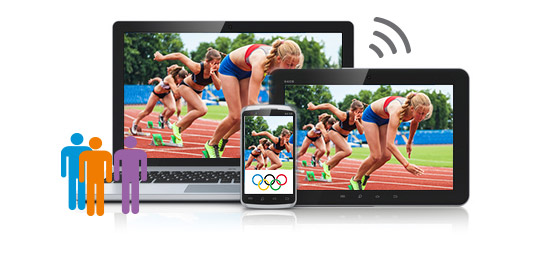
From a methodological point of view, the fact that media consumption is more and more individual on personal devices advocates for an individual panel approach. Again electronic portable measure is a major solution in this new context versus the traditional household panel for TV measurement. As the solutions are more and more hybrid, we can even imagine an approach mixing household peoplemeter for at home measurement and portable peoplemeter for the out of home measurement.
Finally, in some markets where the set-up of a peoplemeter operation is difficult due to the lower compliance of the panellists or where specific life styles require alternative solutions, electronic portable measurement potentially has a role to play.
Let’s bet that the benefits of the electronic portable measurement convince more media industries to change their approaches in the coming years.
As Ricardo Gomez-Insausti, Vice-President, Research & Respondent Contact Centres at Numeris Canada claimed: “the main factor of success is the support and education of the industry during this transition”.
|
|
| |
 |
|
| |
The vision of the media measurement operators
|
 |
| |
GFK
The testimony of Giorgio Licastro
Senior Product Director
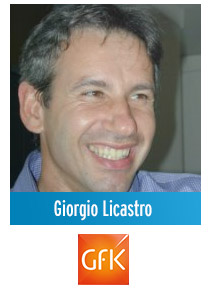 |
GfK has been pioneering the passive and portable meter approach, starting in year 2000 with the Swiss currency and in 2006 with the biggest Italian cross-media survey. Over all these years, we have cumulated a wealth of experience in all aspects of radio measurement, including any kind of technical issues or panel care. The key learning coming from all these years of work is that a single solution cannot possibly meet all the different needs of the global market.
For this reason we have developed other meters to work in parallel with our famous MediaWatch, that ensures a high respondent compliance: the MediaWatch Clip, which is appreciated by the ones who don’t want or cannot use the Watch (e.g. fashion victims or children) and the MediaWatch App, which takes advantage of the panellist’s smartphone to reduce the costs.
This suite of tools can address effectively the preferences of all different targets in the various countries. They are based on the very same platform, and therefore in the same country we can simultaneously use the Watch, the Clip and the App: each person could be offered all of them and pick the one that is the least intrusive in his/her daily life. The system is able to distinguish in-home vs out-of-home listening and to identify car listening.
Moreover, it can be used to measure out-of-home TV.
We believe that a smart combination of different solutions, which may also include a hybrid mix with traditional measurement such as diary and day after recall or even the census of log files, can represent the new RAM approach: a high-quality, affordable and future proof RAM.
|
 |
IPSOS
The testimony of Jim Ford
Global Commercial Director - Mediacell
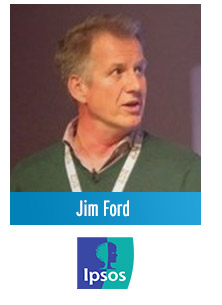 |
Our vision is based around the concept of “Passive Simplicity” in terms of our panellists, our technology choices and the benefits that we in turn offer to our clients. We build our solutions around panellists, rather than asking our panellists to fit our solutions into their lives.
We use familiar and trustworthy consumer devices such as smartphones and tablets for our meters, which are therefore at home within the modern domestic environment. We choose simple solutions which can be easily self-installed by panellists.
An example is the MediaCell smartphone solutions used for radio, out of home TV viewing, which use panel members’ own smartphones which are transformed into powerful meters with the simple uploading of the MediaCell app.
Passive simplicity also drives our software strategy. Software approaches present the most future proofed option for two key reasons. It protects against hardware obsolescence and provides an open architecture build for expansion and partnership. Passive Simplicity means compliant panellists and broad measurement solutions, which in turn enables broader affordable and more accurate measurement.
|
 |
MEDIAMETRIE
The testimony of Arnaud Annebicque
Africa & Europe Business Director
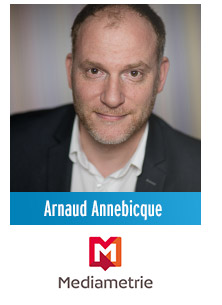 |
With the emergence of digital, media consumption behavior is considerably changing, notably in television and radio. The consumption of these medias is now increasing in mobility outside the home, on other devices (smartphone, tablet...) than traditional ones, and with the ability of time-shifting or to use catch-up services.
For example in France, the daily average time spent watching non-linear TV content reached 10 minutes per individual, the daily average time spent watching TV on screens other than the TV set is 8 minutes per individual, and more than 50% of the daily radio reach is done out of home.
To deal with the challenge of measuring these new audiences, Médiamétrie bet, among other methods, on individual electronic measurement technologies. Thanks to the watermarking technology, the portable meter RateOnAir, developed by Mediametrie is able to recognize all the TV and radio programs to which the panellists are exposed in their direct environment.
RateOnAir has already been adopted in Norway by Kantar to measure the audience of Out-Of-Home TV. It has also been put to the test in a two-media TV & Radio panel in France for almost a year, and is expected to integrate the current methodologies of TV and Radio currency audience measurement in France in 2018.
Finally, many other markets are currently taking a close interest in RateOnAir. In the coming years, Médiamétrie believes that electronic portable measurement will be one of the central elements of audience measurement solutions that are increasingly advanced, elaborated and multi-source.
|
 |
NIELSEN
The testimony of Jorge Papanicolau
Global Product Leader International TV and Video Audience
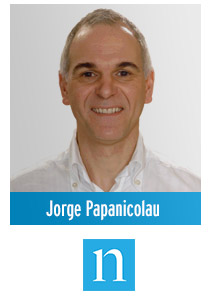 |
Electronic and proprietary portable metering technology is at the heart of Nielsen radio and audio audience measurement solutions. In addition to capturing what stations audiences are listening to, our meters can identify who is listening and when. As technology changes the ways listeners consume audio content, how we measure must evolve accordingly.
We are driving towards a future where electronic portable measurement works in parallel with digital measurement to give audio stakeholders a rounded picture and deeper insight into their listeners preferences and habits. The future of Nielsen’s digital measurement will involve the deployment of our SDK through a cloud-based technology, which is platform, operating system and device agnostic.
The future will also broaden measurement scope to include podcasts and popular streaming services.
Our measurement solutions working hand in hand brings us closer to our goal of helping our stakeholders understand their audience: who they are, what they like and how they interact with content.
|
|
|
| |
 |
|
| |
A flavour of CESP recent missions
|
 |
| |
PORTUGAL
Supporting the Portuguese media industry through a full audit of GFK TV audience measurement system in 2016
GfK has managed the TV audience measurement system in Portugal since 2011. CESP has supported the Portuguese media industry for many years. In 2016, the Comissao de Analise de Estudo de Mercado (CAEM) requested CESP to conduct a full audit of the TV audience measurement system deployed by GfK.
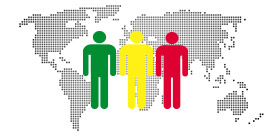
The objective of the audit was to support the JIC discussion with GfK in the coming year. In addition to the full audit process, the members of the JIC also requested CESP to share its international experience on two specific aspects of the current system:
■ On one hand, CAEM requested CESP to evaluate the GfK approach in terms of social class design. CESP Scientific Committee underlined that no consensus has been reached at the international level regarding the social class design. So, the objective of the CESP analysis was to analyse the alignment of the social class design in Portugal compared to its international experience, as well as the relevance of the chosen criteria with the objective of segmenting the households on their power of purchase.
■ On the other hand, CAEM requested CESP to audit the alignment of GfK panel management tools and activities with international standards during the audited period. So, in addition to the audit process, CESP paid particular attention to the panel management team experience and daily organisation. The auditors also got in depth access to the panel management data and the GfK panel management software in order to validate their alignment with international best practices.
 |
SINGAPORE
CESP conducted the first part of its 3 year mission of audit of the multi-screen TV audience measurement system operated by GFK in Singapore
In 2014, the Info-Communication Media Development Authority (IMDA) of Singapore set up a tender in order to launch a multi-screen audience measurement system. The objective of IMDA was to launch an audience measurement of the TV channel programs and videos on multi-devices (TV set, smartphone, computer). GfK won the tender and started to set up the new system in 2015, based on data coming from two panels: a TV panel and a digital panel.
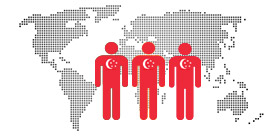
In 2016, IMDA requested CESP to conduct an audit mission to be deployed in 3 main phases:
■ First, in July 2016, CESP audited the TV audience measurement panel on its first month of service in order to ensure the alignment of the system with GfK commitments to IMDA as well as with international best practices. CESP shared its final conclusions with IMDA in December 2016.
■ Then, during the second semester of 2017, CESP will audit the deployment of the digital audience measurement panel. The objective of the audit will be to ensure the alignment of the digital measurement system with CESP expertise and experience of multi-screen audience measurements.
■ Finally, for the last part of the mission to be deployed in 2018, CESP will conduct a second audit of the TV audience measurement panel in order to ensure its alignment after 2 years of service. This audit will also include a focus on the GfK implementation of the CESP recommendations on the digital audience measurement system.
This regular audit program is the recommended approach to ensure the full alignment of the media audience measurement currency for the media industry.
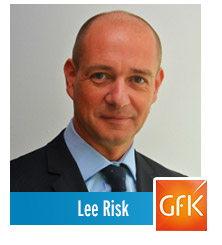
Lee RISK, GfK - Commercial Director APAC, talks about this project:
" Commissioned by the Infocomm Media Development Authority, the SG-TAM service in Singapore was fully audited during the set-up phase in 2016 to ensure that all TAM guidelines were being followed. During the set-up phase there is so much going on with many new initiatives.
It is useful for the service to be independently audited to reassure our client and give confidence to the wider industry that the service is fit for purpose. With the experience of CESP and close collaboration with GfK, we were able to identify and implement areas to further improve the service as we rolled it out. "
 |
RUSSIA
CESP conducted its first audit of the Russian TV audience measurement system in the context of VCIOM-Media acquisition of TNS Media Russia to create Mediascope
In 2016, VCIOM-Media required the expertise of CESP to conduct a full due diligence of probably one of the most demanding TV audience measurement systems in the world. In the largest country, the system provides the media industry daily with an audience measurement on 11 time zones, 700 TV national and regional TV channels and on 29 self-representative cities.
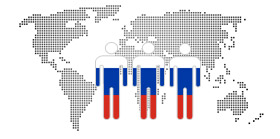
This audit was based on regular meetings in Moscow with the team in charge of the TV audience measurement system but also on household visits across Russia to ensure the actual alignment of the panel with international standards and check the technical ability to collect the TV consumption across the country.
The conclusions were shared with the Russian media industry at the end of April. CESP is extending its support to the Russian media industry.
The testimony of Ksenia ACHKASOVA -
Mediascope - TV Audience Research Director
" We are delighted to have worked with such respectable organization and group of experts on our project. It was an extensive project and we are happy that the results have proven once again that our work on the TV audience measurement in Russia is compliant with the international standards and ensures a high quality measure.
At the end of April, we conducted the joint presentation with CESP of the audit results to our clients and it was important part of our work with the industry on agreeing next steps. Some of the recommendations voiced by CESP have already been implemented and further dialogue with clients will take place to progress further.
We have always operated based on the mutual dialogue and finding consensus with the Russian media industry and will continue to do so in terms of realization of our action-plan following the audit. "
 |
FRANCE
CESP is currently auditing vCE (comScore) and DAR (Nielsen, commercialised by Médiamétrie).

The vCE audit covers the two core components of the comScore solution:
■ Validation: measurement of the quality of ad placement (brand safety, viewability, NHT and invalid traffic)
■ Audience Rating: measurement of the campaign reach and audience composition
The perimeter of the audit includes:
■ desktop and mobile devices on browser environment
■ display and video ad formats
The DAR audit covers all characteristics of the Nielsen solution. The main objective of the tool is to improve the performance of digital advertising campaigns by modelling the daily audience (gender x age) exposed to the campaign. Nielsen provides the market with metrics such as reach, frequency and GRP.
The perimeter of the audit includes:
■ desktop and mobile devices on browser and in-app environment
■ display and video ad formats CESP audits both the quality of the different sources used as well as the modelling phases.
 |
FRANCE
Digital Ad Trust Initiative
The digital media industry does not expect only audits to ensure the methodological alignment of the various tools used to evaluate the web sites and the applications. The media players also request certifications of the quality of digital inventories. SRI, association of the advertising sales departments and Udecam, association of media agencies launched an initiative on this objective and UDA, association of advertisers, Geste, association of publishers and IAB joined quickly this digital media industry project. CESP is currently designing a multi dimension certification. As the same issues exist in other markets, this experience could be easily replicated in other countries.

Five dimensions are at the heart of this new label called Digital Ad Trust:
■ Brand safety, ensuring that the advertiser is present in a safe environment for its brand.
■ Viewability, certifying that the campaign is going to be displayed at the accepted level.
■ Fraud, ensuring that the publisher put in place the relevant tool to limit the potential fraud on the advertising impressions
■ User experience, confirming that the ad is displayed in an environment respecting the norms in terms of content and advertising.
■ Data privacy, ensuring that the publisher respects the current legislation in terms of personal information
CESP, allied with ACPM, is leading this mission in collaboration with all the digital industry and will publish the criteria for the certification in July.
|
|
| |
 |
|
| |
Sharing experiences in international seminars
|
 |
| |
ASI Singapore - May 2016
Olivier Daufresne shared his experience of the different governances of media measurement markets (User Committee, Media Owner Committee, Joint Industry Committee…). In front of media industries that are looking for their future governance rules, CESP demonstrated the benefit of the Joint Industry Committee approach and how it supports the deployment of this kind of market organization.
ASI Budapest - November 2016
Arnaud Annebicque, Médiamétrie and Olivier Daufresne shared the conclusions of a 12-month pilot of Electronic Portable Measurement in France. Médiamétrie conducted a quantitative survey and focus groups to understand the drivers of the panellist active compliance in-depth. Specific initiatives were dedicated to the population between 13 and 24 years old who are particularly difficult to involve in research all over the world. The pilot clearly demonstrated that the success of an Electronic Portable panel is not only a matter of technology but also a question of efficient panel management.
EMRO Switzerland - May 2017
Vladimir Shchipkov, Chief Research and Analytics Officer at Mediascope, and Olivier Daufresne shared the methodological learnings of the TV audience measurement audit conducted on the Russian TV audience measurement system and the action plan deployed with the industry just after this audit program.
Nicolas Cour, Managing Director of ACPM, French Print Joint Industry Committee and Francoise Dupont, CESP Project Director presented the last evolutions of the French National Readership Survey. They focused on the impact of the removal of the audience data collection through CAPI. In fact, the French media industry decided to use a single audience data collection method based on CATI recruitment and CAWI data collection in 2016.
|
|
| |
 |
|
|
|

